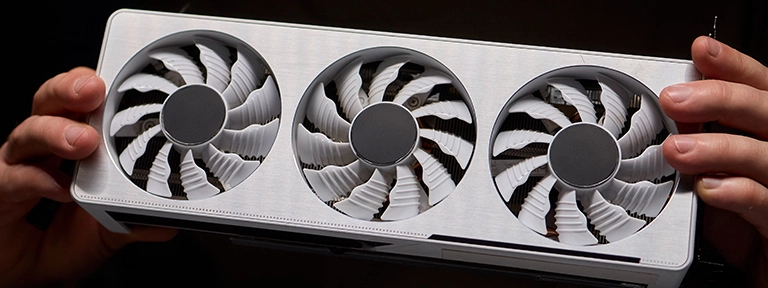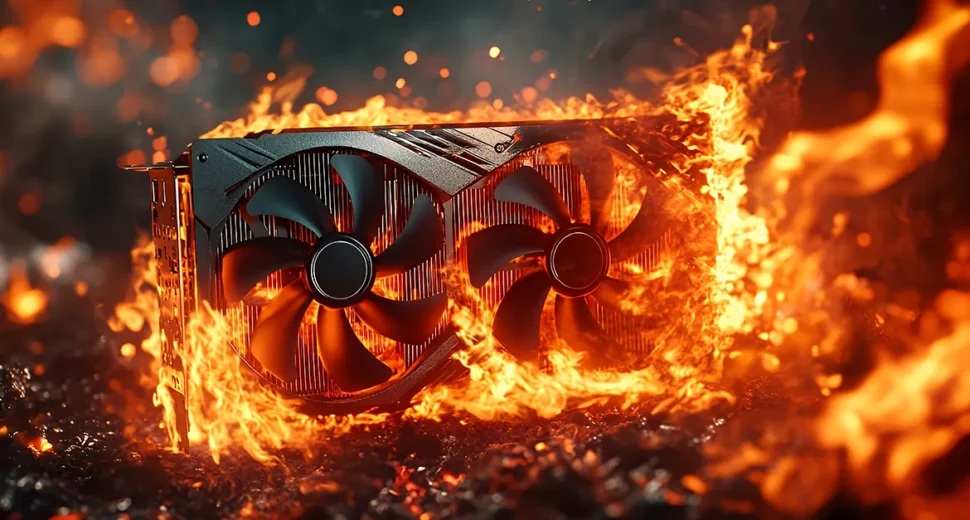Graphics Processing Units (GPUs) are the ones that play a very important part in several high-performance computing (HPC) projects, consisting of gaming, AI, etc. Maintaining the appropriate GPU Server temperature is essential to ensuring high performance, preventing system failures, and expanding the hardware’s time. Even if you’re utilizing GPU hosting or any type of personal equipment, knowing about temperature constraints and management measures is necessary.
What is the Ideal GPU Temperature?

GPUs are built specially to run under some specific workloads, but they have dedicated temperature restrictions to work perfectly. Here are some basic instructions for GPU temperature varieties:
- Temperature Range: 30°C–50°C
- Under heavy Temperatures: 65°C–85°C (common at the time of heavy tasks such as rendering)
- Highest Temperatures: 90°C or more than that
In situations like dedicated GPU server hosting or GPU VPS hosting, where GPUs generally undergo heavy tasks, it’s necessary to monitor and maintain temperatures constantly to avoid overheating and ensure continuous service.
How Hot is Too Hot?
A GPU is always deemed too hot when it constantly crosses 85°C at the time of heavy tasks. High temperatures can result in:
Thermal Throttling
The GPU simply lowers its clock speed to avoid any type of damage, which can decrease system performance.
Reduced Lifespan
Heat boosts wear and tear on factors, contracting the GPU’s life.
Everlasting Hardware Damage
Prolonged risk of high temperatures, like more than 90°C, can result in irreparable damage to essential factors.
In the case of dedicated server hosting GPU solutions, overheating can reduce server reliability, impacting all hosted-based apps and user tasks.
Factors That Impact GPU Temperature
Dust Accumulation
With time, dust can block air fans and hinder heat generation.
Workload Intensity
High-performance projects such as machine learning and high-quality video rendering produce a specific amount of heat.
Overclocking
Elevating GPU clock speeds and power to increase performance leads to higher heat generation.
Cooling System Efficiency
Poor cooling systems can simply result in rising temperatures.
Ambient Environment
Sufficient cooling and air ventilation in hosting are necessary.
How to Check GPU Temperature
Monitoring GPU temperature consistently is necessary to avoid excess heat generation. Here are various tools and protocols you can utilize:
- Third-Party Tools:
- MSI Afterburner: Shows GPU performance data, also temperature.
- GPU-Z: An easy-to-use tool that simply tracks GPU heat data.
- HWMonitor: Checks hardware health, and GPU temperature.
- Built-in Software:
- NVIDIA Control Panel: Helps you to check GPU stats and present temperatures.
- AMD Radeon Software: Provides real-time temperature information.
What Happens When a GPU Overheats?
Performance Drops:
Thermal throttling decreases the GPU’s performance to prevent any damage.
System Crashes:
Overheating can result in application failure or system crashes.
Component Damage:
Prolonged periods of increased temperatures can harm components such as VRMs and RAM modules.
Enhanced Maintenance Costs:
Overheated GPUs may need quick repairs or renewals.
Managing GPU Temperatures Successfully
- Monitor & Adjust Fan Curves
- Utilize software such as MSI Afterburner to tailor fan speeds according to temperature constraints.
- Enhanced Cooling Systems
- Have adequate fans or add liquid cooling systems for proper heat management.
- Make sure that your server or system case has a sufficient amount of airflow.
- Elevate Thermal Paste
- Reapply thermal paste every 2 years to increase heat conductivity.
- Enhance Task Distribution
- In the case of GPU hosting, manage heavy loads across different GPUs to decrease stress on specific components.
- Clean Your GPU
- Constantly clean both heat sinks and cooling fans to have suitable airflow.
Why Temperature Management Matters in GPU Hosting

Temperature management is a very important aspect in different types of hosting environments because
Service Reliability:
Increased GPU temperatures can result in system downtime and impact system performance.
Energy Efficiency:
Overheated factors use more power, increasing working charges.
Client Satisfaction:
Hosting customers expect high performance, which can simply be achieved with the help of flawless heat management.
Cutting-Edge Cooling Solutions for GPU Servers
At present, almost all hosting service providers adopt cutting-edge cooling methods to handle GPU temperatures successfully:
- Liquid Cooling:
- It offers superior heat dissipation compared to conventional air cooling.
- Perfect for extensive dedicated GPU server hosting systems.
- Cold Aisle Containment:
- Split both cold and hot air in data centers to enhance cooling productivity.
- Dynamic Fan Control Systems:
- Manages fan speeds automatically as per GPU temperatures.
- Immersion Cooling:
- Immersing hardware in non-conductive cooling solutions is an ongoing trend for high performance systems.
Choosing the Right GPU Hosting Plan
When selecting a dedicated server, make sure that the service provider offers:
Powerful Cooling Infrastructure
Cutting-edge cooling systems to avoid excess heating.
Monitoring Tools
Actual temperature and performance metrics tracking attributes.
Uptime Guarantees
Optimal performance with unnecessary cooling.
Customizability
Supervisory access to setup GPU settings and handle demanded tasks successfully.
Situations You Need to Address GPU Temperature Problems
- Unnecessary fan noise, depicting overburdening cooling systems.
- Constant application downtime or system failures.
- Burnt or unfamiliar odors from the GPU part.
- Unexpected fall in performance at the time of heavy workloads.
If any of these above-mentioned problems occur, take instant action to avoid big damage.
Advantages of Maintaining Right GPU Temperatures
Accelerated Performance
Preventing restraining and maintaining high processing power.
Increased Hardware Life
Decrease waste produced due to overheating.
Cost Savings
Reduce repair and renewal charges.
Conclusion
Handling GPU temperatures is a very important aspect for ensuring high performance and long-term usage, generally in the case of high-demand situations such as dedicated GPU server hosting and GPU hosting. By knowing about optimal temperature cases, utilizing appropriate monitoring tools, and adopting productive cooling methods, you can avoid excess heating and maintain smooth working.
It doesn’t matter if you’re using a dedicated server with a GPU or depending on GPU VPS hosting; capitalizing on adequate thermal management protocols is necessary to increase your hardware’s lifespan and prevent unnecessary downtime. Select the right service providers, like GPU4HOST, for powerful, temperature-enhanced solutions that fulfill your demanded computing requirements and offer the best web hosting service.


